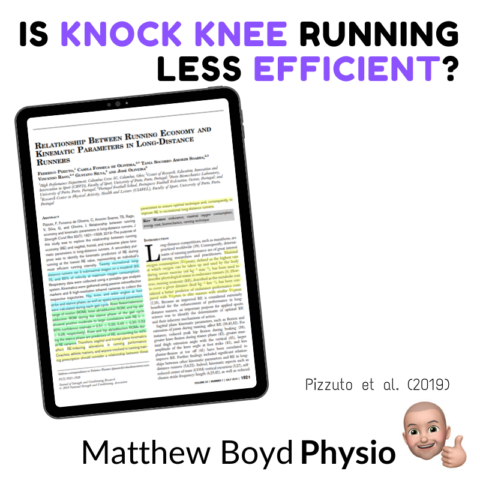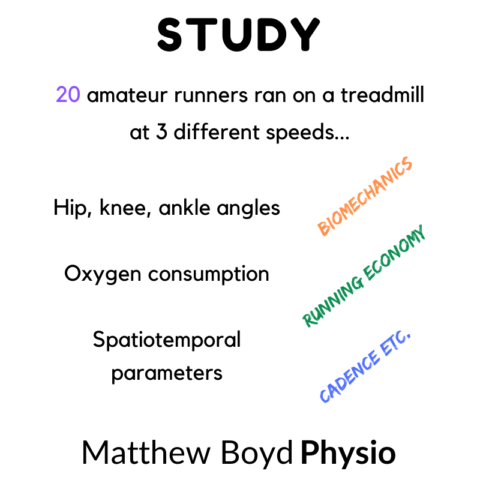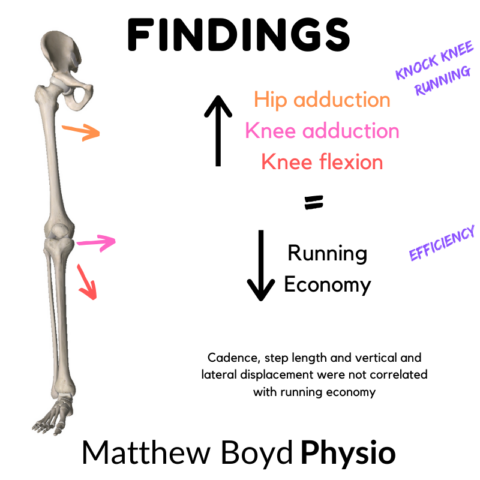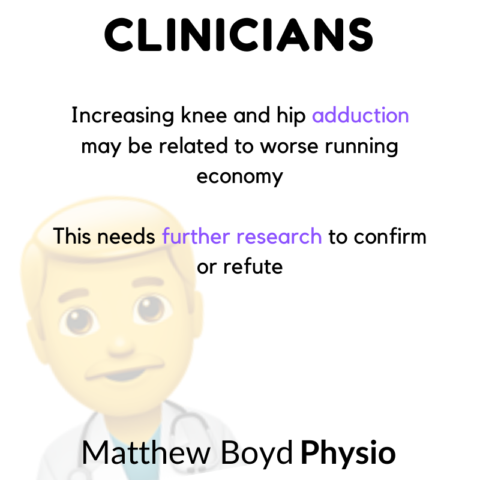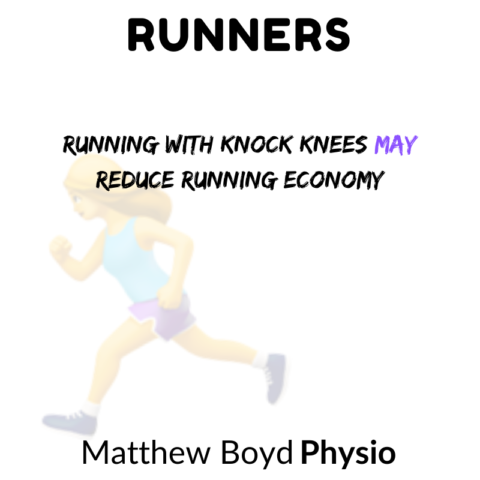There has been quite a lot of research into whether knock knee running (the knee coming inwards toward the midline) relates to injuries such as runners knee. However, there has not been much research to see if this running pattern might effect performance. In a recent paper, researchers from Columbus, Ohio examined how lower limb biomechanics might relate to running economy. Running economy is basically our “fuel efficiency”. We want to have a very economical running style so we don’t waste energy. The researches found that larger amounts of inwards movement of the knee during running (or a “knock knee” pattern) actually reduced running economy…
Study
- 20 amateur runners
- Ran on a treadmill at 3 different speeds
- Measured:
- Hip, knee, ankle angles at foot strike and mid-stance (biomechanics)
- Oxygen consumption / running economy
- Spatiotemporal parameters (cadence, step length and vertical and lateral displacement etc.)
Findings
- Angles at the hip and knee were related to running economy
- Knee flexion angle (large)
- Hip adduction angle (moderate)
- Knee adduction angle (large)
- Cadence, step length and vertical and lateral displacement were not correlated with running economy
Limitations
- Observational study – they didn’t attempt to change any of these angles and predict a change in economy to help confirm a causal relationship
- These were fairly high-level runners who were doing > 50km per week – these results may not apply to beginner or recreational runners
- They measured 25 variables and only had 20 subjects. I’m not a statistician but to me this suggests a high risk of finding significant results by purely random chance
Clinicians
- Increasing knee and hip adduction may be related to worse running economy
- This needs further research to confirm or refute
Runners
- Running with knock knees may reduce running economy
Link
